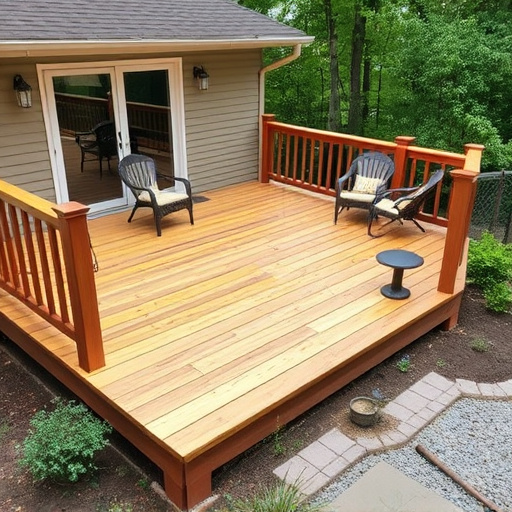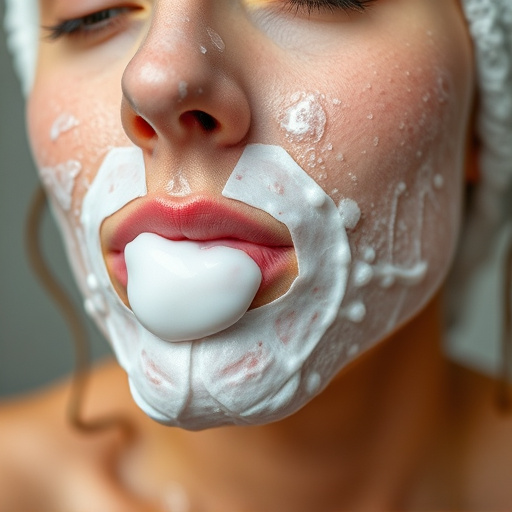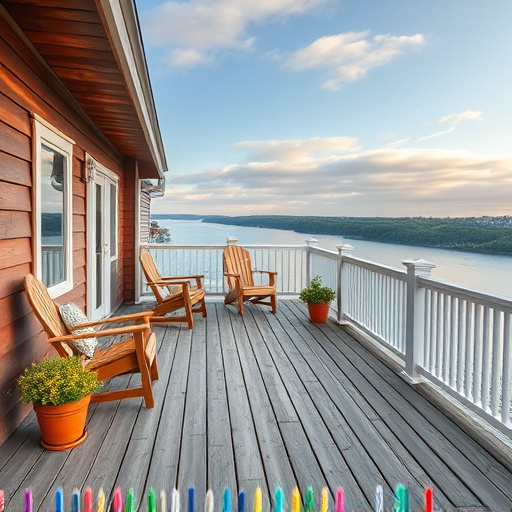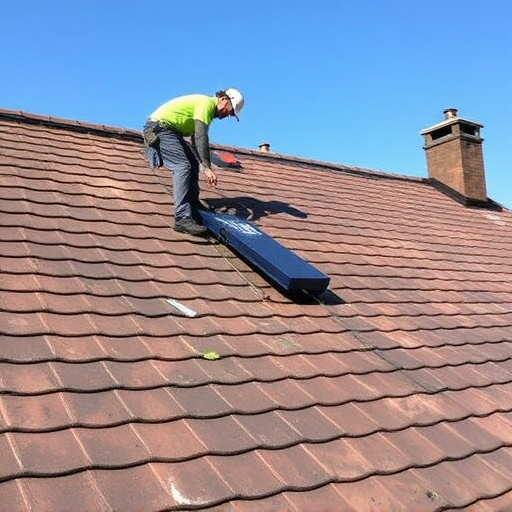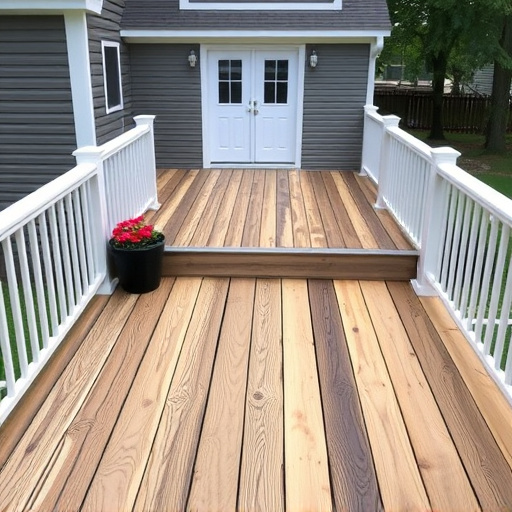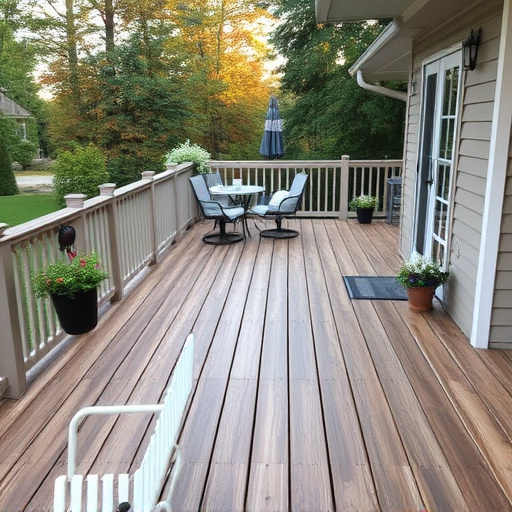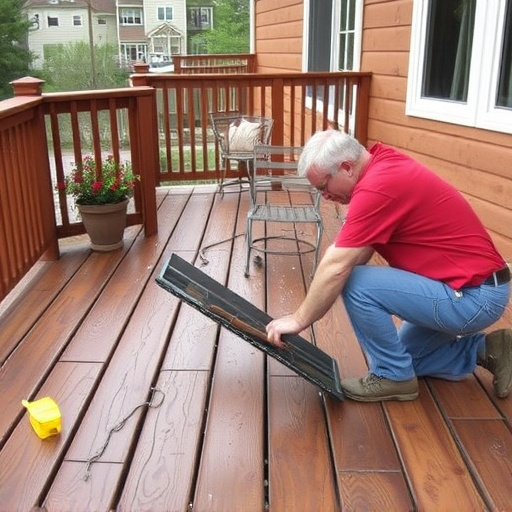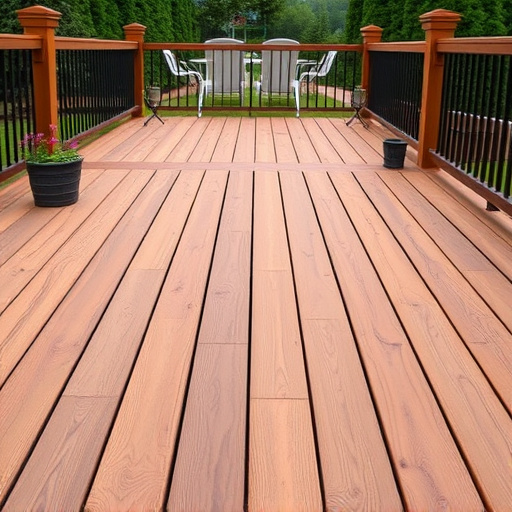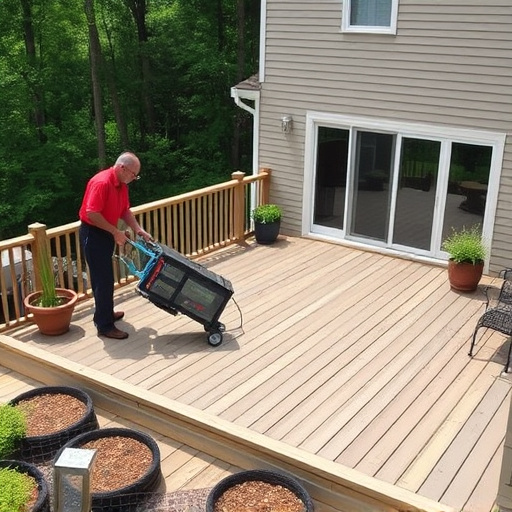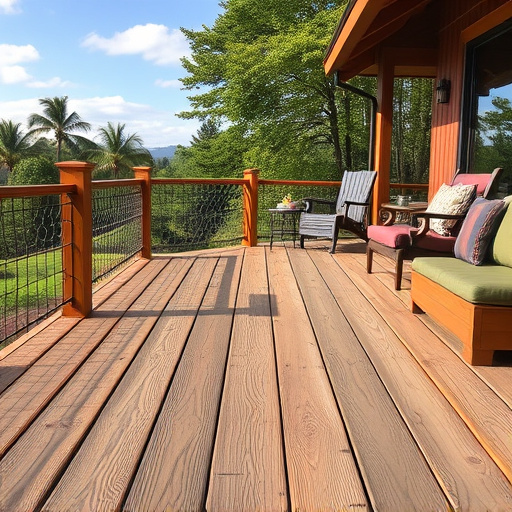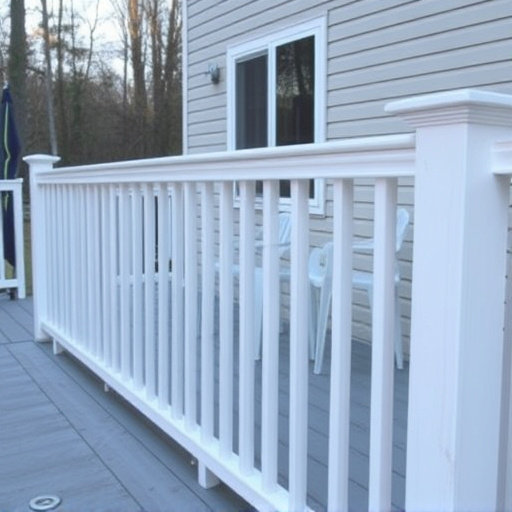Deck staining enhances outdoor wooden surfaces' aesthetics and durability, but requires careful consideration. Mitigate peeling, cracking, and color fading by using high-quality water-based stains with UV stabilizers and mildew resistance. Proper surface preparation, even application, and regular re-staining every few years ensure long-lasting deck protection against weather and elements, akin to professional siding installation.
Looking to revive your deck and protect it from the elements? Deck staining is a popular choice, but finding a solution that prevents peeling and cracking can be challenging. This guide explores the essentials of deck staining, focusing on long-lasting protection against common issues. We’ll delve into choosing the right stain formulas and application techniques to ensure your deck stays beautiful for years to come.
- Understanding Deck Staining: The Basics and Common Issues
- Choosing the Right Stain: Formulas for Longevity and Protection
- Application Techniques to Prevent Peeling and Cracking
Understanding Deck Staining: The Basics and Common Issues
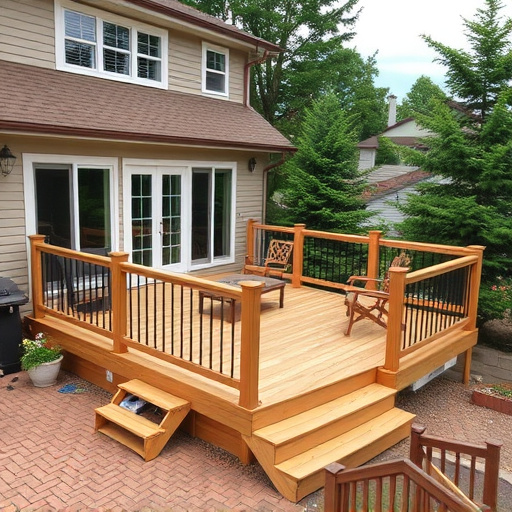
Deck staining is a popular method to enhance the appearance and protect outdoor wooden surfaces. It involves applying a pigmented sealer or finish to the deck, offering a range of colors and protective benefits. However, not all deck stains are created equal; understanding the process and potential issues is key to achieving a long-lasting, beautiful result.
One of the primary concerns with deck staining is preventing peeling and cracking, which can occur due to various factors like exposure to harsh weather conditions, UV rays, or improper application techniques. Common problems include surface blistersing, color fading, and, as mentioned, peeling and cracking over time. To avoid these issues, it’s essential to choose a high-quality stain suitable for outdoor use, follow manufacturer instructions carefully during application, and regularly maintain the deck to ensure longevity. Commercial roofing and siding services often recommend specific stains based on their durability and protective properties, ensuring that decks not only look good but also stand the test of time.
Choosing the Right Stain: Formulas for Longevity and Protection
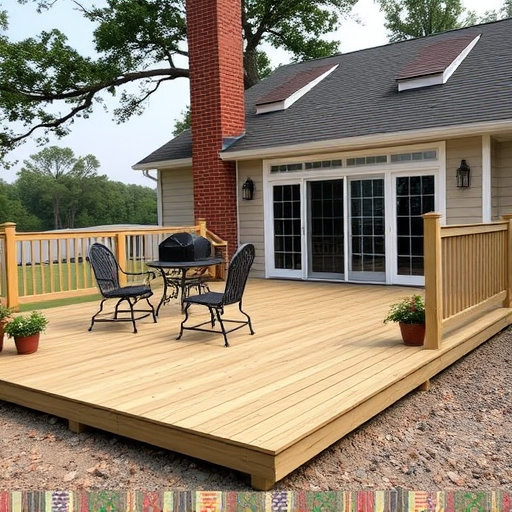
When considering deck staining, choosing the right formula is paramount to prevent peeling and cracking. Look for stains designed with advanced water-based technologies that offer superior protection against UV rays, extreme temperatures, and moisture—all contributors to deck deterioration. These formulas often include UV stabilizers and mildew-resistant properties, ensuring your deck remains vibrant and durable for years.
Avoid oil-based or solvent-based stains, which are more prone to peeling and cracking over time. Commercial roofing and residential roofing services frequently recommend water-based stains due to their longevity and ease of application. Additionally, consider stain options with flexible, breathable properties that allow the wood to expand and contract naturally, preventing stress cracks.
Application Techniques to Prevent Peeling and Cracking
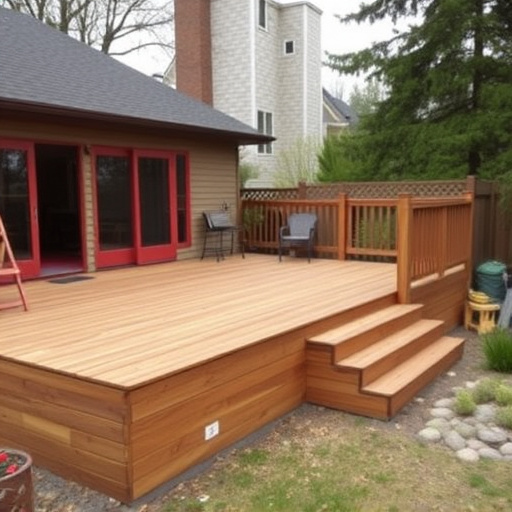
When applying deck staining to prevent peeling and cracking, several techniques can ensure long-lasting protection. Start by preparing the surface thoroughly; this includes cleaning the deck to remove any dirt, mold, or mildew, and sanding it gently to create a rough texture that allows the stain to adhere better. Using a brush with fine bristles or a roller with a suitable cover ensures even distribution of the stain.
For optimal results, maintain a consistent coat thickness, avoiding thin layers that might not offer adequate protection. Consider using a high-quality, weather-resistant stain designed specifically for outdoor decks. Additionally, applying a primer before staining can enhance adhesion and fill in minor cracks, further preventing future peeling and cracking. Regular maintenance, such as re-staining every few years, will also contribute to the deck’s longevity, maintaining its protective barrier against the elements, much like a professional siding installation would protect a home’s exterior.
Deck staining is a powerful tool to protect your outdoor space, but choosing the right formula and application method is key to preventing peeling and cracking. By understanding the basics and common issues, selecting a durable stain, and mastering application techniques, you can ensure your deck stays beautiful and sturdy for years to come. Implement these strategies for long-lasting, high-quality results in your deck staining endeavors.
